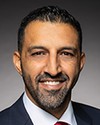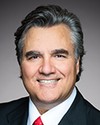I call this meeting to order.
Welcome to meeting number 15 of the Standing Committee on Transport, Infrastructure and Communities.
Pursuant to Standing Order 108(2) and the motion adopted by the committee on Monday, January 31, 2022, the committee is meeting to study the state of Canada's supply chain.
Today's meeting is taking place in a hybrid format, pursuant to the House Order of November 25, 2021. Members are attending in person in the room and remotely using the Zoom application.
Per the directive of the Board of Internal Economy on March 10, 2022, all those attending the meeting in person must wear a mask, except for members who are at their place during proceedings.
I will take a moment to make a few comments for the benefit of our members and our witnesses.
Please wait until I recognize you by name before speaking. For those participating by video conference, click on the microphone icon to activate your mike and please mute yourself when you are not speaking.
For interpretation, those of you who are on Zoom have the choice at the bottom of your screen of either “floor”, “English” or “French”. Those of you who are in the room can use the earpiece and select the desired channel. As a reminder, all comments should be addressed through the chair.
For members in the room, if you wish to speak, please raise your hand. For members on Zoom, please use the “raise hand” function. The clerk and I will manage the speaking order as best we can, and we appreciate your patience and understanding in this regard.
Members, appearing before the committee today we have, from the Canadian Vehicle Manufacturers' Association, Mr. Brian Kingston, president and chief executive officer; from General Motors of Canada Limited, Mr. David W. Paterson, vice-president, corporate and environmental affairs; from Global Automakers of Canada, Mr. David Adams, president and chief executive officer; from Lion Electric, Mr. Patrick Gervais, vice-president, marketing and communications; from the Prince Rupert Port Authority, Mr. Ken Veldman, vice-president, public affairs and sustainability; and from Sysco Canada, Mr. Randy White, president.
Welcome back, Mr. White.
As well, from the Vancouver Fraser Port Authority, we have Mr. Greg Rogge, director of land operations, and Mr. David Miller, who is appearing in person today and is senior advisor to the executive director.
We wish now to begin the opening remarks with the Canadian Vehicle Manufacturers' Association for five minutes. The floor is now yours.











